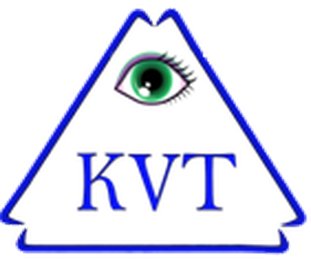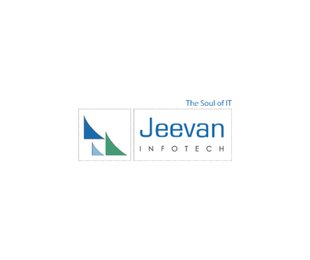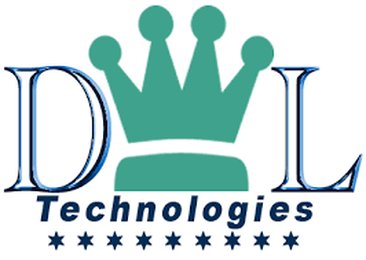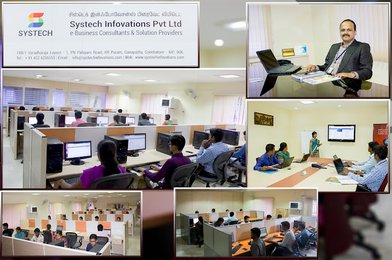MICROSPARK BUSINESS SOFTSOLUTIONS 132 Kma nagar dindigul, old karur road, Dindigul, Tamil Nadu, 624005
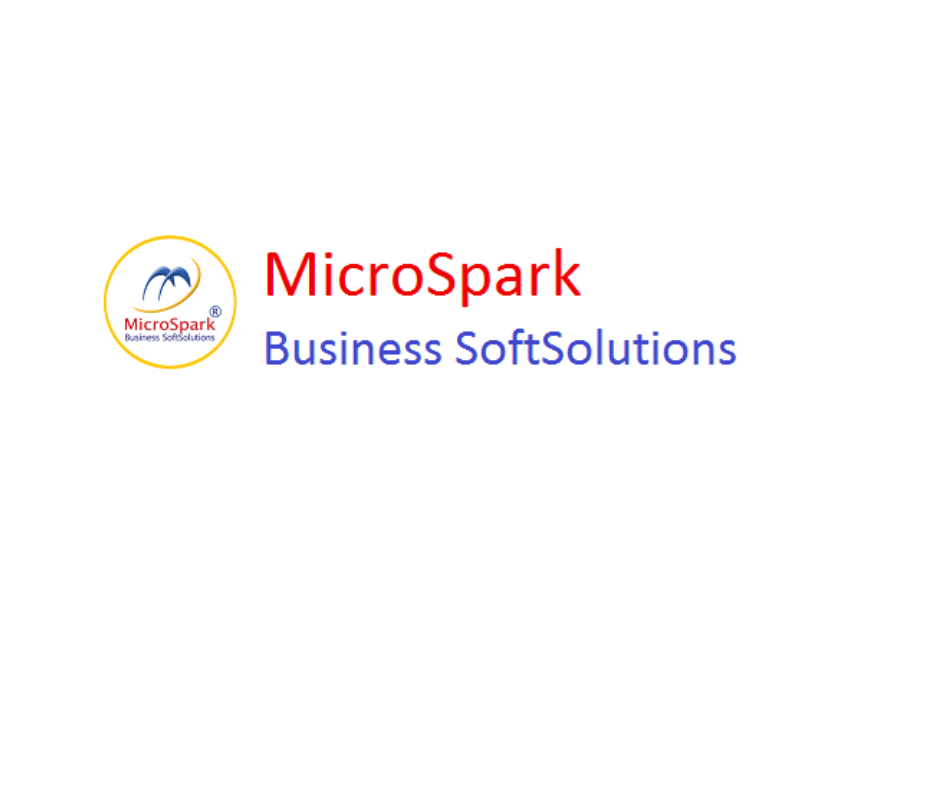
MICROSPARK BUSINESS SOFTSOLUTIONS
132 Kma nagar dindigul, old karur road, Dindigul, Tamil Nadu, 624005
Phone: +91-0451-3207639, 2434934
Mobile: +91-99421-17839, 99655-17839
E-Mail: info@microspark.biz
Web / URL : www.microspark.biz
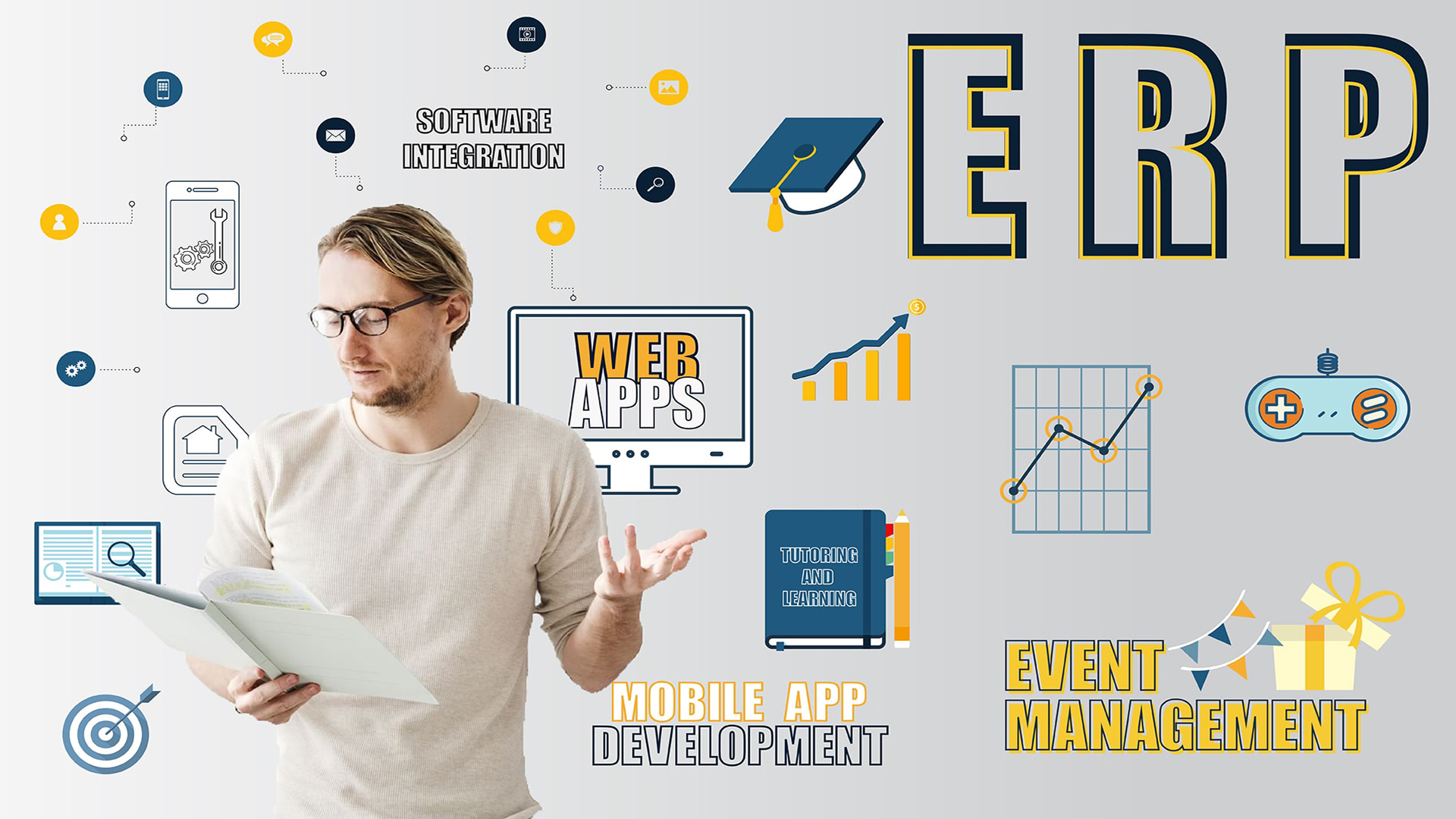
About The Microspark
MicroSpark offers a broad spectrum of Development Services – ERP Solutions (For all kind of Industries), Client Server & Intranet applications, Onsite & Offshore developmental services and Project Consultancy.
MicroSpark’s competitive advantage and the source of great value to our clients come not only from our expertise in e-business and application management, but from several aspects of our unique business model that include.
It is my pleasure to welcome you to MicroSpark. We've grown closer to our vision 5*5 - being among the top5 in Five years - envisioned in 2005. We've grown to be a formidable player in the dynamic residential mortage industry of the india.
Our innovative ideas and use of the latest technologies and tools has helped us in gaining prominence as one of the leading Software Company in India. With our products, we aim at helping the potential customers to create both offline and online initiatives successfully in the fields of Mobile App,Digital Marketing and Web Designing.
The Microspark Is Awesome
Out technical experts are highly proficient in various platforms, domains, technologies, tools and languages.
1. Languages
PHP, ASP.NET, Dot.NET, ASP, JAVA, XML, VB.NET, VB, JavaScript, C/C++, J2ME, Android studio,HTML5, CSS3.
2. Databases
MS SQL-Server, MySQL, MYSQL Lite, DB2, IMS, MS Access, RPG, Sybase, Oracle, Web Services API
3.Platforms & Integrations
Windows, IBM Maibframe, Linux. UNIX, AS400, Payment Gateway Integrations, SMS integrations.
Software Applications
We offer clients innovative solutions to their software needs using PHP 5, ASP, .NET, JSP, J2EE, Java, Voice XML, XML-HTTP Messaging and AJAX technologies with MySQL, MS SQL, Oracle and MS ACCESS as databse.
Android,IOS Applications
We develop apps for handheld devices such as personal digital assistants, and mobile phones. These applications are either pre-installed on phones, or downloadable by customers from mobile software distribution platforms.
ERP Sofware
There are many benefit that accrue to a business when they implement our Enterprise Resource Planning (ERP) software. The most important benefits are Improvement in productivity, No task is left un-finished, Reduced cost of operation and Streamlined processes.
Our Services
MicroSpark offers a broad spectrum of Development Services – ERP Solutions (For all kind of Industries), Client Server & Intranet applications, Onsite & Offshore developmental services and Project Consultancy.
Innovative approach
Innovative approach to all kind of Industries
Respecting our customers.
A customer/client is the most valued asset for any business firm.
True satisfaction
We aim at providing complete satisfaction to our clients.
True ways of life
We adhere to the sayings of the Vedas that God lies in “unselfishness”.
Project Management
Full life cycle capability for Project Management.
Perfection Par Excellence
We work dedicatedly on all our projects and value our customers.
Professional Web Design
Our professionals are well-versed in the field and provide incredible work to the clientele. We are pretty sure that if you get satisfied with our work, then you will choose us time and again in future.
Responsive Design
We design not only exclusive website for our customers, but make it completely user-friendly, so that our the users does not find any difficulty while browsing across the website. Moreover, we develop for perfect functionality in all browsers as well as devices.
Web Redesign
Thus web redesigning place your business on a concrete foundation which would make your business a supreme one in the prevailing competitive market.
SERVICES
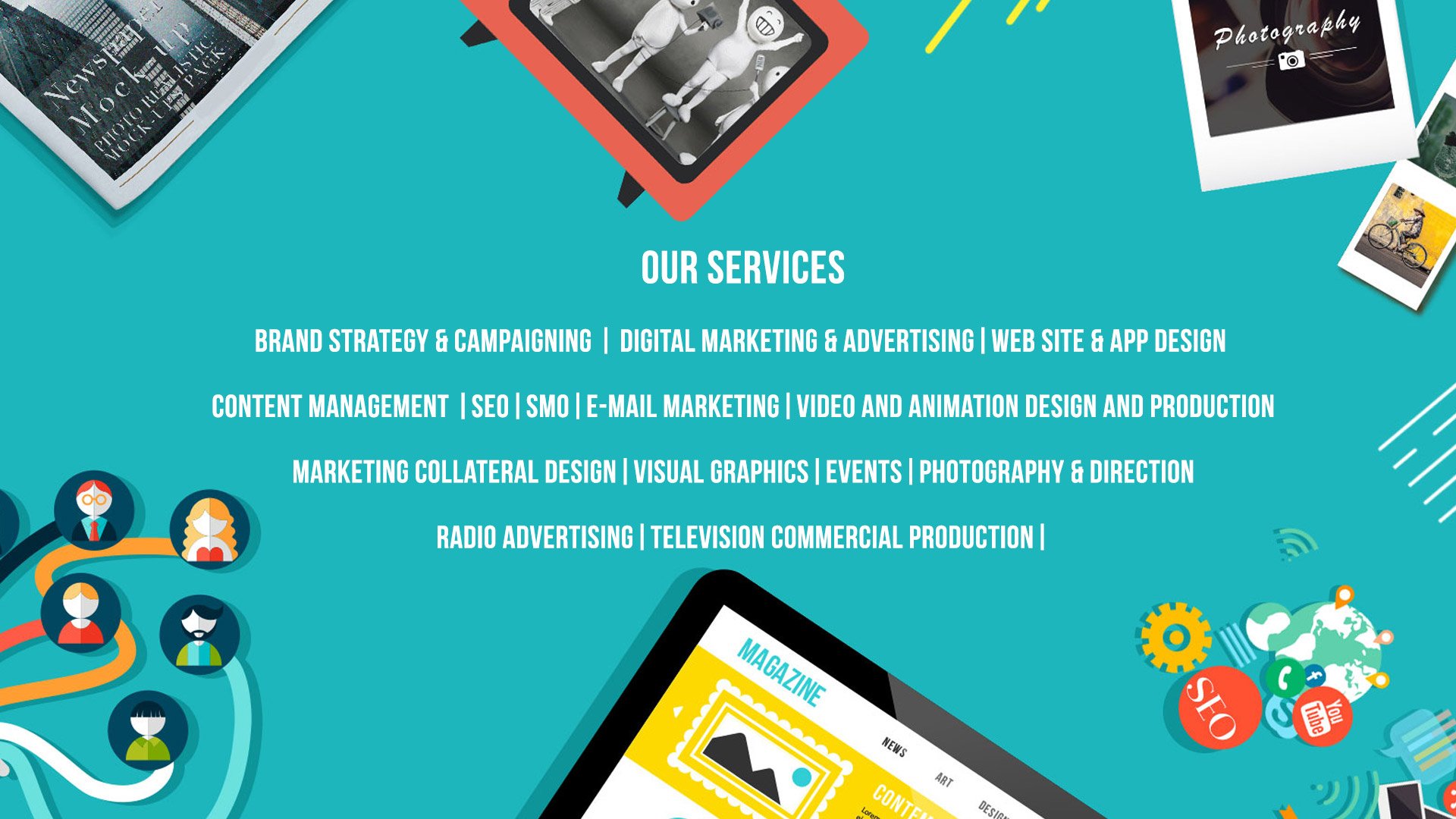
Mobile App Development
Mobile app development refers to the process of creating software applications that run on mobile devices such as smartphones and tablets. These apps can be developed for various mobile operating systems, including Android, iOS, Windows Phone, and others.
The mobile app development process typically involves the following stages:
Idea and Concept: This is the initial phase where you come up with the app idea and define its purpose, target audience, and features. Researching the market and potential competitors is crucial at this stage.
Planning: In this stage, you create a detailed plan outlining the app's functionalities, user interface (UI) and user experience (UX) design, technology stack, and development timeline. Decisions about whether to build a native app or a cross-platform app using frameworks like React Native or Flutter are made here.
Design: The app's visual design and layout are created during this phase. Designers work on wireframes, mockups, and prototypes to visualize the app's look and feel.
Development: Actual coding takes place during the development phase. Developers write the code for the app, implement the features, and integrate the backend services if needed. Regular testing and bug fixing are performed throughout this stage.
Testing: The app goes through various testing processes to identify and fix bugs, compatibility issues, and performance problems. Quality assurance (QA) testing is crucial to ensure a smooth and stable user experience.
Deployment: Once the app is fully developed and tested, it's ready for deployment. For Android apps, this means publishing on the Google Play Store, and for iOS apps, it means submitting to the Apple App Store. There are specific guidelines and requirements for each platform.
Maintenance and Updates: After the app is launched, it requires continuous maintenance and updates to keep it compatible with new devices, operating system versions, and to fix any bugs or security vulnerabilities.
Mobile app development can be done by individual developers, small teams, or large development companies. It often involves collaboration between designers, developers, testers, and project managers.
In recent years, mobile app development has seen significant growth due to the increasing usage of smartphones and the demand for innovative mobile applications that cater to various needs and industries, ranging from social networking, e-commerce, productivity tools, gaming, health, and more.
Software Development
Software development is the process of creating computer programs or applications that perform specific tasks or provide certain functionalities. It involves designing, coding, testing, and maintaining software to meet the requirements of users or businesses. Software development can range from simple scripts or small applications to complex, large-scale systems used in various industries.
The software development process typically includes the following stages:
Requirements Gathering: In this initial phase, project stakeholders define and gather the specific needs and objectives of the software. Understanding the requirements is crucial for building software that meets the intended purpose.
Planning and Design: During this stage, software architects and designers create a blueprint for the software. They decide on the software's structure, design the user interface, and plan the overall development approach.
Implementation (Coding): Developers write the code based on the design specifications. They use programming languages and frameworks suitable for the project's requirements and goals. Coding can involve creating algorithms, database interactions, and integrating various components.
Testing: Once the code is written, the software goes through rigorous testing to identify and fix bugs, errors, and potential issues. Different testing methodologies like unit testing, integration testing, and system testing are used to ensure the software functions correctly.
Deployment: After successful testing, the software is deployed to the production environment, making it available for end-users. Deployment might involve setting up servers, databases, and configuring the software for optimal performance.
Maintenance and Updates: Software requires ongoing maintenance to keep it functional and secure. Regular updates are released to fix bugs, improve performance, and add new features based on user feedback and changing requirements.
Software development can take various approaches, including:
Waterfall: A linear approach where each stage is completed before moving to the next one.
Agile: An iterative approach where development is done in small increments, allowing for flexibility and continuous improvement.
DevOps: A methodology that emphasizes collaboration between development and operations teams to streamline software delivery and deployment.
Software development is a diverse field with various specializations, such as web development, mobile app development, desktop application development, cloud-based solutions, artificial intelligence, and more. The choice of technology, programming languages, and tools depends on the specific requirements and goals of the software project.
Web Development
Web development refers to the process of creating websites or web applications that are accessed through the internet. It encompasses a range of tasks, including web design, web content development, client-side scripting, server-side scripting, and network security configuration. Web developers use various programming languages, frameworks, and tools to build functional and interactive websites that cater to different purposes and audiences.
There are two main components of web development:
Front-end Development (Client-side):
Front-end development involves everything that users interact with directly on a website or web application. Front-end developers use HTML (Hypertext Markup Language), CSS (Cascading Style Sheets), and JavaScript to create the visual layout, style, and interactivity of the website. Modern front-end development also involves the use of frameworks and libraries like React, Angular, or Vue.js to streamline development and create dynamic user interfaces.
Back-end Development (Server-side):
Back-end development deals with the server-side of the website or web application. It includes server setup, database management, and handling server-side logic. Back-end developers work with server-side languages such as Python, Ruby, PHP, Java, or Node.js, along with databases like MySQL, MongoDB, or PostgreSQL. They build the logic that processes user requests, manages data, and interacts with the front-end to provide dynamic content and functionality.
The web development process typically involves the following steps:
Requirement Gathering: Understanding the project's objectives, target audience, and features required for the website or web application.
Web Design: Creating the visual layout and user interface (UI) design of the website. This may involve wireframing and prototyping to visualize the design before implementation.
Front-end Development: Converting the design into actual code using HTML, CSS, and JavaScript. Implementing responsive design to ensure the website works well on different devices.
Back-end Development: Building the server-side infrastructure, handling databases, and developing the server-side logic for dynamic content and functionalities.
Integration: Connecting the front-end and back-end components to create a fully functional web application.
Testing: Thoroughly testing the website or application for bugs, usability, and compatibility with different browsers and devices.
Deployment: Making the website or application available on a web server for public access.
Maintenance: Regularly updating and maintaining the website or application to ensure security and optimal performance.
Web development can range from simple static websites to complex web applications with advanced features like e-commerce platforms, content management systems (CMS), social networking sites, and more. As technology evolves, web developers need to stay updated with the latest trends and best practices to deliver efficient and user-friendly solutions.
Digital Marketing
Digital marketing refers to the use of digital channels, platforms, and technologies to promote products, services, or brands to a targeted audience. It encompasses a wide range of online marketing activities aimed at reaching and engaging potential customers through various digital mediums. Digital marketing has become increasingly important in the modern business landscape due to the widespread use of the internet and mobile devices.
Key components and strategies of digital marketing include:
Search Engine Optimization (SEO): SEO is the practice of optimizing a website to rank higher in search engine results pages (SERPs) organically. It involves improving website content, meta tags, backlinks, and other factors to increase visibility and attract more organic (non-paid) traffic.
Content Marketing: Content marketing involves creating and distributing valuable, relevant, and consistent content to attract and retain a clearly defined audience. Content can take the form of blog posts, articles, videos, infographics, podcasts, and more.
Social Media Marketing: Utilizing social media platforms such as Facebook, Twitter, Instagram, LinkedIn, and others to promote products, engage with the audience, and build brand awareness. Social media marketing involves both organic (unpaid) and paid advertising efforts.
Pay-Per-Click (PPC) Advertising: PPC advertising is a form of online advertising where advertisers pay a fee each time their ad is clicked. It is commonly used in search engine advertising (e.g., Google Ads) and social media advertising (e.g., Facebook Ads).
Email Marketing: Sending targeted emails to potential and existing customers to promote products, offers, or content. Email marketing can help nurture leads and build customer loyalty.
Influencer Marketing: Partnering with influential individuals or personalities on social media to promote products or services. Influencers have a dedicated and engaged following, which can help reach a specific target audience.
Affiliate Marketing: Collaborating with affiliates or partners who promote your products or services on their platforms in exchange for a commission for each sale or lead generated.
Online Public Relations (PR): Building and maintaining a positive online presence through press releases, media coverage, and other online PR strategies.
Analytics and Data Analysis: Utilizing web analytics tools to measure the performance of digital marketing campaigns and make data-driven decisions for continuous improvement.
Digital marketing offers businesses the ability to reach a global audience, target specific demographics, measure campaign effectiveness, and adjust strategies in real-time. It is a dynamic and ever-evolving field, with constant updates in technologies, algorithms, and consumer behavior influencing the way digital marketing campaigns are planned and executed.
SEO
SEO, which stands for Search Engine Optimization, is the practice of optimizing websites or online content to improve their visibility and rankings in search engine results pages (SERPs). The primary goal of SEO is to increase organic (non-paid) traffic to a website, thereby attracting more relevant visitors who are actively searching for information, products, or services related to the website's content.
Key components and strategies of SEO include:
Keyword Research: Identifying and analyzing the search terms (keywords) that potential visitors use when looking for information related to the website's content. Keyword research helps in understanding user intent and targeting relevant keywords with adequate search volume and lower competition.
On-Page SEO: Optimizing individual web pages to make them search engine friendly. This involves creating high-quality, relevant, and valuable content around target keywords, using proper heading tags (H1, H2, etc.), optimizing meta tags (title tags and meta descriptions), and ensuring proper URL structures.
Technical SEO: Addressing technical aspects of a website to ensure it can be easily crawled and indexed by search engines. Technical SEO involves improving website speed, fixing broken links, ensuring proper use of canonical tags, implementing schema markup, and creating an XML sitemap.
Off-Page SEO: Building the website's authority and reputation through external factors. Off-page SEO includes link building, where high-quality backlinks from other reputable websites are obtained, indicating to search engines that the website is valuable and trustworthy.
Mobile-Friendly Optimization: Ensuring that the website is mobile-friendly and responsive, as mobile-friendliness is a crucial ranking factor for search engines, especially with the increased use of mobile devices.
User Experience (UX): Providing a positive user experience is vital for SEO. Websites that offer a smooth, intuitive, and user-friendly experience tend to rank higher in search results.
Content Marketing: Creating valuable and relevant content that appeals to the target audience. High-quality content attracts more visitors and encourages other websites to link back to the content, which contributes to improved SEO.
Local SEO: For businesses targeting a specific local audience, local SEO practices are essential. This includes optimizing the website for local keywords, setting up a Google My Business page, and acquiring local citations.
SEO is an ongoing process that requires continuous monitoring, analysis, and adaptation to keep up with search engine algorithm updates and changes in user behavior. It is a critical aspect of digital marketing, as higher search engine rankings lead to increased visibility, website traffic, and potential conversions for businesses and organizations.
PRODUCTS
ERP Solutions
ERP, which stands for Enterprise Resource Planning, refers to software systems designed to integrate and manage various business processes and functions within an organization. ERP solutions provide a centralized and unified platform for businesses to streamline operations, improve efficiency, and enhance decision-making processes.
Key features and benefits of ERP solutions include:
Centralized Data Management: ERP systems consolidate data from different departments and business units into a single database. This centralization ensures data accuracy, eliminates data duplication, and provides real-time access to information for all authorized users.
Process Automation: ERP solutions automate repetitive tasks and workflows, reducing manual effort and the risk of human errors. This automation can improve productivity and free up employees to focus on more strategic tasks.
Integrated Business Functions: ERP integrates various functions like finance, human resources, inventory management, sales, marketing, procurement, and more. This integration allows for seamless communication and data sharing across departments, promoting collaboration and better decision-making.
Enhanced Reporting and Analytics: ERP systems offer advanced reporting and analytics capabilities. Managers can access real-time performance metrics and insights to make data-driven decisions and identify areas for improvement.
Cost Savings: By streamlining processes and reducing manual tasks, ERP solutions can lead to cost savings in terms of labor, inventory management, and other operational expenses.
Customer Relationship Management (CRM): Many ERP systems include CRM modules, enabling businesses to manage customer interactions, sales leads, and customer data effectively.
Scalability: ERP solutions are scalable, which means they can adapt to the changing needs of a growing business. They can accommodate more users, data, and business processes as the organization expands.
Regulatory Compliance: ERP systems often come with built-in compliance features to help businesses adhere to industry regulations and standards.
Cloud-Based ERP: Cloud-based ERP solutions offer the advantage of easy accessibility, flexibility, and lower upfront costs, as they are hosted on remote servers and accessed through the internet.
ERP solutions can be tailored to suit the specific needs of different industries, such as manufacturing, retail, healthcare, finance, education, and more. The implementation of an ERP system typically requires careful planning, customization, training, and ongoing support to ensure a successful integration with the organization's existing processes and workflows. When implemented effectively, ERP solutions can be a powerful tool to drive operational excellence and business growth.
Management Solutions
Management solutions refer to software or systems designed to assist organizations and businesses in effectively managing various aspects of their operations and resources. These solutions are designed to optimize processes, improve decision-making, and enhance overall efficiency in managing people, projects, tasks, data, and other resources.
Here are some common types of management solutions:
Project Management Software: These solutions help plan, execute, and track projects from start to finish. They typically include features for task management, scheduling, resource allocation, collaboration, and progress tracking.
Human Resources Management System (HRMS): HRMS solutions streamline HR processes, including employee onboarding, payroll management, performance evaluations, benefits administration, and attendance tracking.
Customer Relationship Management (CRM) Software: CRM solutions are designed to manage interactions with customers and potential customers. They store customer data, track sales leads, manage marketing campaigns, and provide insights into customer behavior.
Inventory Management Software: These solutions help businesses keep track of their inventory levels, automate reordering processes, manage stock across multiple locations, and ensure optimal inventory levels.
Financial Management Software: Financial management solutions assist with accounting, budgeting, invoicing, expense tracking, and financial reporting. They help organizations keep their finances organized and compliant.
Enterprise Asset Management (EAM) Software: EAM solutions are used to manage physical assets, such as equipment, machinery, vehicles, and facilities. They help with asset maintenance, repair scheduling, and lifecycle management.
Supply Chain Management (SCM) Software: SCM solutions optimize the flow of goods and services from suppliers to consumers. They help with procurement, inventory management, demand forecasting, and logistics coordination.
Business Intelligence (BI) and Analytics Tools: BI tools gather, analyze, and present data from various sources to help organizations make informed decisions. They provide insights into performance, trends, and areas for improvement.
Learning Management System (LMS): LMS solutions are used for training and development purposes. They enable organizations to create and deliver online courses, track learner progress, and assess training effectiveness.
Quality Management Software (QMS): QMS solutions help businesses maintain quality standards by managing processes related to quality control, compliance, and continuous improvement.
Management solutions are essential for businesses seeking to streamline their operations, improve productivity, and make data-driven decisions. The selection of a management solution depends on the specific needs and objectives of the organization, as well as factors such as budget, scalability, and ease of integration with existing systems. When implemented and utilized effectively, management solutions can significantly contribute to the success and growth of a business.
Web / Multimedia
Web multimedia refers to the use of various media elements on websites to enhance user experience, engagement, and visual appeal. It involves incorporating a combination of different multimedia elements, such as images, videos, audio, animations, and interactive elements, into web pages.
Here are some common multimedia elements used in web design:
Images: High-quality images, photographs, illustrations, and graphics can make a website visually appealing and help convey information or evoke emotions.
Videos: Embedded videos can be used for product demonstrations, promotional content, tutorials, and storytelling.
Audio: Background music, voiceovers, or sound effects can be used to enhance the user experience, but it should be used thoughtfully to avoid being intrusive.
Animations: Animations, such as animated banners, sliders, and loading screens, can add interactivity and visual interest to web pages.
Interactive Elements: Interactive elements, like buttons, forms, sliders, and quizzes, engage users and encourage them to take specific actions on the website.
Infographics: Infographics are visual representations of data or information that make complex concepts easier to understand.
Slideshows and Carousels: Slideshows and carousels display a series of images or content that automatically transition or can be manually controlled by users.
Virtual Reality (VR) and Augmented Reality (AR): Advanced web applications may incorporate VR or AR elements to create immersive experiences.
When using multimedia elements on a website, it's essential to consider factors like page load speed, accessibility, and responsive design to ensure that the website performs well on various devices and provides an inclusive experience for all users, including those with disabilities.
The proper use of web multimedia can significantly enhance user engagement, communicate messages effectively, and make a website more memorable and enjoyable. However, it's crucial to strike a balance and use multimedia elements judiciously to avoid overwhelming users and negatively impacting the overall user experience.



